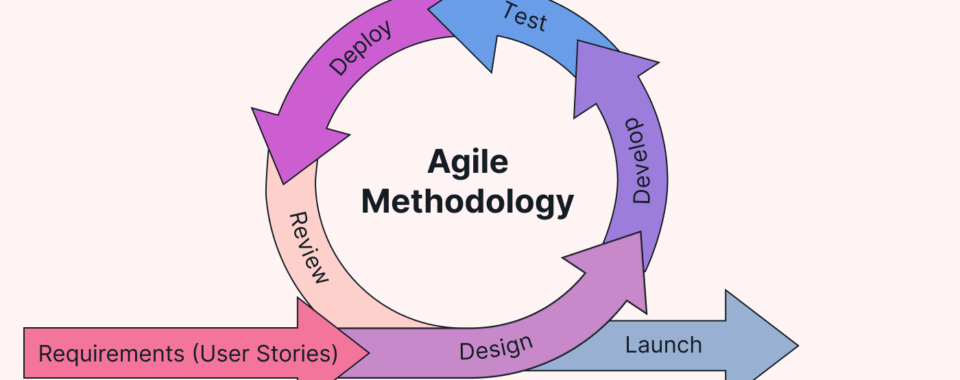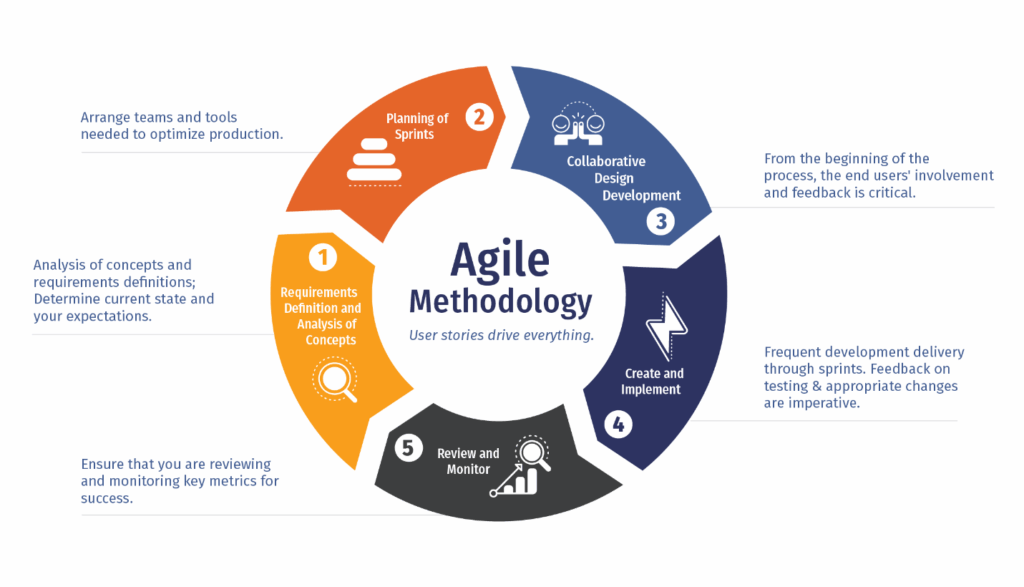
Let’s be honest—software development can be messy. Between shifting client demands, tight deadlines, and ever-evolving tech, it’s easy for teams to feel overwhelmed. That’s where Agile methodology steps in—and changes everything.
Agile isn’t just another buzzword. It’s a mindset that’s reshaping how software teams work, communicate, and deliver value. It’s about working smarter, not harder—and creating space for flexibility, collaboration, and constant improvement.
Here’s a closer look at how Agile methodology transforms software development in seven powerful, real-world ways.

1. It Keeps You Flexible—Even When Plans Change
Plans change. Clients change their minds. Priorities shift. And in traditional development models like Waterfall, that can lead to big problems and lost time.
Agile methodology embraces change. Instead of sticking to a rigid plan from day one, Agile methodology lets your team adjust course as you go. You work in short “sprints”—usually two to four weeks—and at the end of each one, you can reassess, get feedback, and pivot if needed.
It’s like having a built-in GPS for your project instead of driving with a paper map from 1998.
2. You’ll Deliver Faster—and That’s a Big Win
In Agile methodology, you’re not waiting months to see a finished product. Every sprint delivers something usable. That means your clients or stakeholders can start seeing results early—and give feedback while there’s still time to make changes.
Instead of one big launch, you deliver value in small, steady bursts. Faster releases, quicker fixes, and fewer surprises.
3. Your Team Communicates Better (And That Means Fewer Mistakes)
Agile thrives on communication. Daily check-ins (aka stand-ups), sprint planning sessions, and retrospectives keep everyone on the same page. There’s no mystery about who’s doing what or where things stand.
The result? Fewer dropped balls, less confusion, and a team that actually works like a team.
4. Clients Stay in the Loop (And Happier Because of It)
With Agile, your client isn’t just someone who checks in at the end. They’re part of the journey.
Through regular demos and feedback loops, they get to see how things are coming along—and suggest changes on the fly. It builds trust, improves the end product, and eliminates that terrifying moment of showing a finished product that doesn’t match what the client wanted.
5. Quality Becomes a Habit, Not an Afterthought
One of the best things about Agile methodology? Testing isn’t shoved to the end.
Because each sprint includes development, testing, and review, bugs are caught early—and often. Agile teams also use techniques like Test-Driven Development (TDD), which means they write the test before the code.
This keeps quality front and center, not an emergency fix two days before launch.
6. Everyone Knows What’s Going On (And Why It Matters)
Tools like Trello, Jira, or simple whiteboards make it easy to visualize the work in progress. Everyone can see what’s being worked on, what’s done, and what’s coming up.
It creates accountability and gives your team and your client a shared sense of progress—which is a big deal when deadlines are tight.
7. It Lowers Risk—and Boosts Your ROI
Because Agile is all about early delivery, client feedback, and constant improvement, the risk of building the “wrong” thing drops dramatically.
Plus, because you focus on delivering the most valuable features first, you’re giving your clients faster returns on their investment—without waiting for a full launch.
So, What Is Agile Methodology, Really?
At its core, Agile methodology is about:
- Working in short, focused bursts (called sprints)
- Collaborating closely (with your team and your client)
- Being ready to adapt to change
- Continuously delivering and improving
It’s less about rigid plans and more about building software that actually works—and works well for the people who need it.
Who Makes Agile Work?
Agile only succeeds when everyone plays their part:
- Product Owner: Prioritizes what matters most to the client.
- Scrum Master: Keeps the process flowing and removes obstacles.
- Development Team: Gets the work done, collaboratively and iteratively.
When these roles are clear and empowered, Agile can run like a well-oiled (and human-friendly) machine.
Thinking of Going Agile? Start Small.
You don’t have to flip your whole organization overnight. Many teams start Agile with one project or team and expand once they see the benefits.
Here’s how to get going:
- Try a tool like Trello or Jira to visualize your workflow.
- Hold short daily check-ins to keep communication flowing.
- Plan your work in sprints—and always reflect on what went well and what didn’t.
Conclusion
Agile methodology isn’t magic—but it’s pretty close when done right. It creates a rhythm for your team, brings clients into the process, and makes building software less chaotic and more human.
And the best part? It’s not just for tech giants anymore. Whether you’re a solo dev, a startup, or a growing team, Agile can help you deliver better software—faster and smarter.
For more insights, connect with Alpheric








